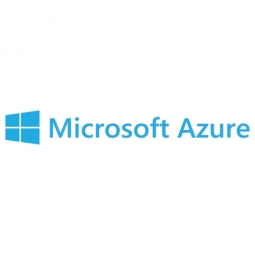
- Application Infrastructure & Middleware - Data Exchange & Integration
- Application Infrastructure & Middleware - Database Management & Storage
- Platform as a Service (PaaS) - Data Management Platforms
- Cities & Municipalities
- Business Operation
- Smart City Operations
As one of the biggest megatrends of the 21st century, urbanization affects both recent and established industrial countries. In the European Union, already more than 70 percent of the population live in an urban area. In Germany, the uninterrupted urban growth is likely to pose huge challenges for many municipalities in the future, in areas like traffic, energy, environment and health. For this reason, innovative solutions in terms of city planning and city development are required. Additionally, increasingly demanding citizens expect a high quality of life and improved citizen services. To address those challenges, traditional routes must be tested, old infrastructures modernized and administrative processes organized more efficiently.
“Our platform UrbanPulse brings together the various data sources that any city already collects now, like traffic light sensor data, for example“, explains Christian Müller from [ui!] – The Urban Software Institute. By bundling onto one platform, the data is made usable for any applications based upon them, thus enabling value-added services for the administration of a city or direct service for citizens.”
“Until now, this measurement data has been treated in isolation,“ says Müller. By linking the data on the UrbanPulse platform, synergies are achieved. Thus, for instance, street lighting could be reduced at night when sensors register less or little traffic on a particular road. If the traffic volume increases, lighting can be automatically increased again. This way, energy could be saved without jeopardizing traffic safety.
With Urban[traffic!] Pulse, [ui!] has developed an application that processes traffic-relevant data. The solution analyses the sensor data transmitted by traffic guidance systems at intersecting roads and makes them available almost in real time. Since spring 2013, the solution has been in the test phase in Darmstadt and has been continuously providing measurement data to research institutes of Darmstadt Technical University (e.g. traffic planning and traffic technology). City employees also have the opportunity to import information on the extension of road intersections into the system. This information is also used to perform a geo-referencing of the sensors.
Additionally, the sensor data are visualized on the website of the “da-sense“ research project (www.da-sense.de), and are made available publicly to citizens.
How does Microsoft Azure work?
The UrbanPulse platform is a cloud-based solution that was built on Microsoft Azure with the support of Microsoft Enterprise Services. In the truest sense of the “Internet of Things”, the sensors transmit measurement data to the city online via the UrbanPulse system. [ui!] provides this data as a Cloud Service. Specific applications like Urban[traffic!] Pulse can thus process, analyze and react to the data. The data is provided almost in real time as web applications serve as a basis for possible value-added services. Microsoft Azure forms the centerpiece of the urban pulse rate. The Cloud Service ensures the performance, storage capacity and high-availability of the UrbanPulse sensor data platform. “Versatility and flexibility make Azure an ideal platform for our solution,” says Müller. “The Cloud Service is fully compatible with our Java-based application, and our experiences with Microsoft support have always been excellent.“ Virtual Machines and SQL databases are both fully in the Azure Cloud. The performance of Microsoft Azure is easily scalable depending on requirements. The utilization peaks of a server are displayed in due time, so that the capacity can be quickly adjusted. At the same time, costs always remain predictable and transparent. Thus, it is possible for us to reliably provide our platform and any related value-added services via Cloud Computing,” explains Müller. In the future, [ui!] would like to offer its UrbanPulse platform also to other application developers as a basis for urban services from the Cloud.

Case Study missing?
Start adding your own!
Register with your work email and create a new case study profile for your business.
Related Case Studies.

.png)











